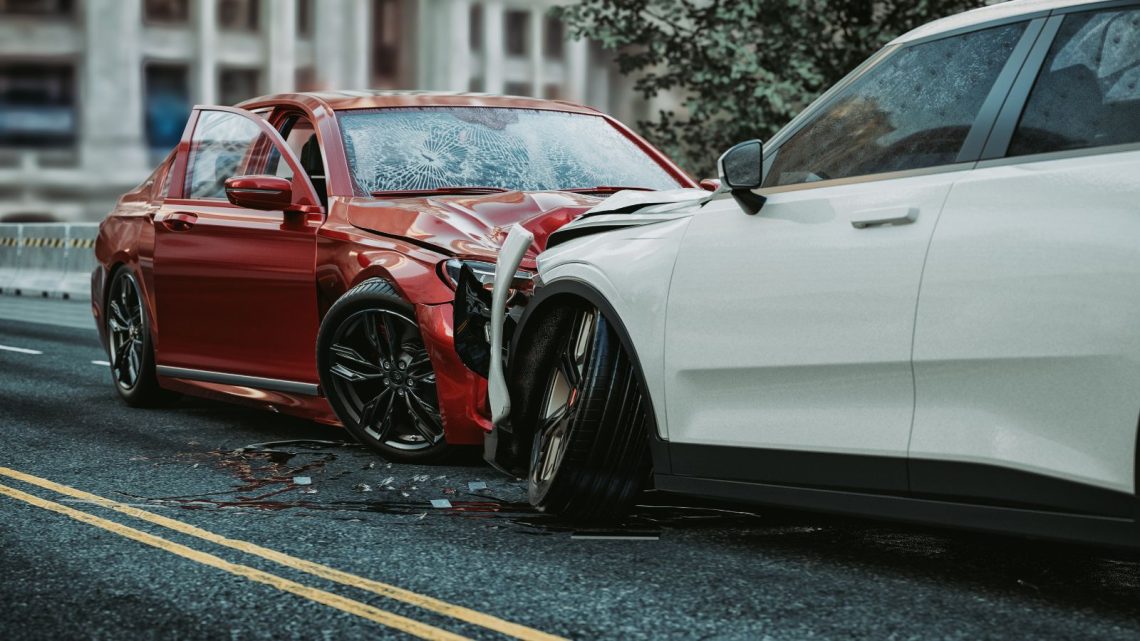If you’ve been involved in a motor vehicle accident in Nebraska, you’re facing a complex web of insurance calls, medical bills, repair estimates, and legal questions. This comprehensive guide explains Nebraska’s fault determination system, recoverable damages, insurance requirements, and critical deadlines—all in plain English. We’ll also examine a real-world parking lot case that illustrates common liability issues in private property accidents.
Whether your accident occurred in Omaha, Lincoln, Grand Island, or a rural county road, the same fundamental principles apply. Understanding these laws can protect your rights and maximize your recovery. If you need personalized legal advice, our experienced Nebraska car accident attorneys offer free case consultations.
Motor Vehicle Accidents in Nebraska: Your Complete Legal Guide (2025)
How Nebraska Determines Fault in Motor Vehicle Accidents
Negligence: The Foundation of Most Claims
Most car accident claims in Nebraska are based on negligence—the failure to exercise reasonable care while driving. Common examples include:
- Speeding or aggressive driving
- Distracted driving (texting, phone use)
- Following too closely
- Unsafe lane changes
- Running red lights or stop signs
- Turning left across oncoming traffic without ensuring safety
To succeed in your claim, you must prove the other driver’s negligence directly caused your injuries and losses.
Left-Turn Rules Apply Everywhere
Nebraska law requires drivers making left turns to yield to oncoming traffic that poses an immediate hazard. This duty applies not only on public roads but also in parking lots, private drives, and commercial properties where sight lines may be obstructed. Even without traffic signals, the left-turning driver must ensure the path is clear before proceeding.
Modified Comparative Negligence: The 50% Rule
Nebraska follows a modified comparative negligence system that can significantly impact your recovery. Here’s how it works:
- Fault is assigned by percentage to each party involved in the accident
- Your compensation is reduced by your percentage of fault
- If you’re 50% or more at fault, you cannot recover any damages
- Even partial fault doesn’t bar recovery as long as you’re less than 50% responsible
Example: If your total damages are $100,000 and you’re found 20% at fault, you can recover $80,000. However, if you’re 50% or more at fault, you receive nothing.
This system makes evidence collection and legal strategy crucial. Even small shifts in fault allocation can dramatically affect your financial recovery.
Special Considerations for Parking Lot and Private Property Accidents
Private property accidents present unique challenges because traditional traffic controls are often absent. In parking lots and commercial drives, several factors become critical:
Heightened Duty of Care
Without traffic signals or clear right-of-way rules, both drivers must exercise exceptional caution. Property owners may share liability if poor lighting, inadequate signage, or hazardous conditions contribute to the accident.
Sight Obstruction Issues
Buildings, landscaping, parked vehicles, and walls commonly block sight lines in private areas. These obstructions don’t eliminate the duty to proceed carefully—they actually increase it.
Evidence Becomes Even More Important
In parking lot accidents, physical evidence often tells the story better than witness testimony:
- Scrape and gouge marks on pavement show vehicle paths and impact points
- Paint transfer patterns reveal collision angles and speeds
- Debris fields indicate where the actual impact occurred
- Final vehicle positions help reconstruct the sequence of events
Case Spotlight: Private Property Left-Turn Collision in Nebraska
- Setting: West Omaha commercial center with private drives and limited sight lines
- Vehicles: Motorcycle traveling through the lot; SUV making a left turn across the motorcycle’s path
- Visibility Challenge: Building and landscaping blocked clear sight lines for both drivers
What Happened
The SUV driver looked left down the drive, then right to check for cross-traffic, and began the left turn. During that brief moment, the motorcycle reached the intersection point. The collision occurred along the SUV’s front end, with the motorcycle operator suffering injuries and the bike leaving scrape marks on the pavement.
Why This Case Matters
- Private Property Doesn’t Eliminate Liability: Despite being off public roads, standard negligence principles still applied
- Left-Turn Duty Persisted: The SUV’s obligation to yield to oncoming traffic remained in effect
- Physical Evidence Was Decisive: Scrape marks, paint transfer, and final rest positions helped expert reconstructionists determine the sequence of events
- Timing and Visibility Were Key: The SUV driver’s testimony about when he looked and what he could see became central to the liability determination
This case demonstrates how parking lot accidents, while seemingly straightforward, can involve complex factual disputes requiring careful documentation and expert analysis.
Parking-lot crashes can be deceptively complex. Sight obstructions, short decision windows, and turning movements often generate close questions of fault. If you were injured in a Nebraska parking-lot or private-drive accident, our team can evaluate your claim, preserve critical evidence, and pursue the full compensation the law allows.
Recoverable Damages in Nebraska Car Accidents
After establishing fault, Nebraska law allows recovery for both economic and non-economic losses.
Economic Damages (Measurable Financial Losses)
- Medical expenses: Emergency room, diagnostic imaging, surgery, therapy, medications
- Future medical care: Ongoing treatment, pain management, future surgeries
- Lost wages: Time off work, missed overtime opportunities, lost bonuses
- Diminished earning capacity: Reduced ability to work due to permanent injuries
- Household services: Childcare, lawn care, cleaning you cannot perform while injured
- Property damage: Vehicle repair/replacement, diminished value, personal property
Non-Economic Damages (Life Impact Losses)
Nebraska recognizes that serious injuries create losses that cannot be easily quantified:
- Pain and suffering: Both physical discomfort and mental anguish
- Emotional distress and anxiety: Psychological impact of the trauma
- Loss of enjoyment of life: Inability to participate in hobbies, travel, or family activities
- Disfigurement and scarring: Permanent physical changes affecting appearance
Spousal Claims (Loss of Consortium)
If injuries substantially impact the marriage relationship—including affection, companionship, and assistance—your spouse may have a separate claim for loss of consortium.
Punitive Damages: Generally Not Available
Unlike many states, Nebraska generally does not allow punitive damages in standard personal injury cases. Your recovery focuses on compensating actual losses rather than punishing the wrongdoer.
Critical Deadlines: Nebraska Statutes of Limitations
Missing these deadlines typically results in complete loss of your right to compensation, regardless of how strong your case may be.
Standard Deadlines
- Personal injury (negligence): 4 years from the date of injury
- Wrongful death: 2 years from the date of death
- Workers’ compensation injuries: 2 years from the accident
Government Entity Claims: Shorter Deadlines
Accidents involving city buses, county vehicles, or state-owned cars trigger strict notice requirements and shortened deadlines:
- Written notice requirements: Often 30-90 days
- Lawsuit deadline: Typically 2 years, sometimes less
Critical Note: Because government-involved crashes have such strict requirements, contact an attorney immediately if any public entity may be involved.
Nebraska Insurance Requirements and Practical Tips
Mandatory Coverage Requirements (2025)
Nebraska requires all drivers to carry minimum liability insurance:
- Bodily injury liability: $25,000 per person / $50,000 per accident
- Property damage liability: $25,000 per accident
- Uninsured/Underinsured motorist (UM/UIM): $25,000 per person / $50,000 per accident
Why Minimum Coverage May Not Be Enough
Current vehicle values often exceed these minimum limits. A moderate collision can easily result in damages exceeding $25,000, potentially leaving you financially exposed.
Protective Strategies
- Medical Payments (MedPay) Coverage: Pays medical bills immediately regardless of fault, helping bridge the gap while liability is determined.
- Higher UM/UIM Limits: Essential protection if the at-fault driver has insufficient coverage. This can be your most important coverage in serious accidents.
- Document Everything: Keep detailed records of all medical treatment, lost wages, and property damage from day one.
Insurance Company Interactions
Recorded Statements: Insurance adjusters are trained to minimize payouts. Before giving any recorded statement, consider consulting with counsel. If you do speak:
- Stick to basic facts only
- Avoid estimating speeds or distances
- Don’t make “I’m fine” statements that may contradict later medical findings
Crash Reporting Requirements in Nebraska
You must file a Driver’s Motor Vehicle Crash Report within 10 days if:
- Anyone is injured or killed (regardless of severity)
- Property damage exceeds $1,500 (combined for all vehicles and property)
- Law enforcement did not investigate the scene
Preferred Method: Complete the report online through the Nebraska Department of Transportation’s Driver Crash Reporting website.
Immediate Action Checklist After a Nebraska Car Accident
At the Scene (When Safe)
- Call 911 and get medical evaluation—adrenaline can mask serious injuries
- Document thoroughly:
- Wide-angle and close-up photos of all vehicles, license plates, debris
- Approach paths for both vehicles showing sight lines
- Scrape marks, fluid stains, and final rest positions
- Weather, lighting, and road conditions
- Any sight obstructions (buildings, signs, landscaping)
- Gather witness information and note nearby businesses with potential security cameras
- Exchange information with all parties: driver’s license, insurance, contact details
- Avoid admissions—stick to facts; don’t speculate about speed, fault, or blame
After Leaving the Scene
- See your doctor within 24-48 hours and follow all treatment recommendations
- Preserve your vehicle until it can be properly photographed and inspected
- Contact an experienced Nebraska car accident attorney to protect evidence and meet all deadlines
- Keep detailed records of all medical care, missed work, and expenses
Frequently Asked Questions
Do left-turn yielding rules apply in parking lots?
Yes. Drivers turning left must yield to oncoming vehicles that pose an immediate hazard, even on private property.
Can I pursue a claim if police called it a “private property incident”?
Absolutely. You can file a negligence claim regardless of whether the accident occurred on public or private property.
What if I might be partially at fault?
Nebraska’s comparative negligence law reduces your recovery by your percentage of fault. If you’re less than 50% at fault, you can still recover compensation.
How long do I have to file a lawsuit?
Generally four years for personal injury, two years for wrongful death. Government-related claims often have much shorter deadlines.
Should I talk to insurance companies before hiring a lawyer?
You can, but be cautious. Consider consulting an attorney first to understand your rights and the best way to present your claim.
How Our Firm Approaches Nebraska Car Accident Cases
When we take your case, we focus on three essential elements:
Comprehensive Liability Investigation
- Secure and preserve all physical evidence from the scene
- Download available vehicle telematics and data
- Retain accident reconstruction experts when appropriate
- Map approach paths and measure sight lines in parking lot cases
- Analyze scrape marks and paint transfer patterns that reveal the true sequence of events
Complete Medical and Life Impact Documentation
- Document your injuries, treatment, and prognosis from day one
- Work with medical experts to establish future care needs
- Quantify lost earning capacity when injuries affect your ability to work
- Document how the accident has changed your daily life and relationships
Strategic Insurance Management
- Identify all available insurance coverages (liability, UM/UIM, MedPay, umbrella policies)
- Handle medical lien negotiations to maximize your net recovery
- Navigate complex coverage issues to ensure full compensation
Protecting Your Rights After a Nebraska Car Accident
Nebraska car accident cases may appear straightforward, but parking lot and private drive collisions often involve deceptively complex liability issues. Obstructed sight lines, brief timing windows, and left-turn duties create genuine factual disputes that require meticulous documentation and, frequently, expert analysis.
Success in these cases depends on prompt medical care, detailed evidence preservation, and focused legal strategy. With proper preparation, you can build a compelling case and pursue full compensation under Nebraska law.
If you or a loved one was injured in a Nebraska motor vehicle accident—whether on public roads or private property—contact our experienced legal team for a free consultation. We’ll explain your options, protect crucial evidence, and work diligently to preserve your rights while you focus on recovery.
Horgan Law – Your Trusted Omaha Law Firm
If you’re looking for an Omaha law firm that combines the wisdom of experience with the energy and ambition of youth, look no further than Horgan Law, P.L.L.C. As experienced Lawyers in Omaha, NE, we apply our knowledge to every case to get you the best possible outcome. Our success is measured by yours-no matter what your situation is, we’ll be there to help you through it.
Ready to experience the difference? Contact Horgan Law today to discuss how we can assist. Your legal journey just got easier.







